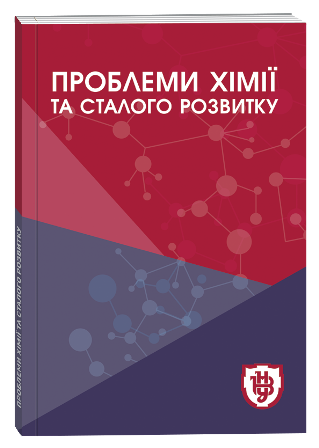ECOLOGICALLY ORIENTED INORGANIC SYNTHESIS OF TiO2-BASED NANOMATERIALS FOR WASTEWATER TREATMENT
DOI:
https://doi.org/10.32782/pcsd-2025-2-1Keywords:
inorganic synthesis, nanomaterials, purification, wastewaterAbstract
The article considers current approaches to environmentally friendly synthesis of nanomaterials based on titanium dioxide (TiO2), which can be effectively used for wastewater treatment from organic pollutants. Given the growing environmental requirements for chemical technologies, special attention is paid to the so-called “green synthesis” – a method of obtaining nanomaterials using natural reducing agents, plant extracts and non-toxic solvents. This approach allows minimizing the negative impact on the environment during the production of photocatalytically active materials. The process of obtaining TiO2 nanoparticles using green tea extracts, willow bark and other natural components that serve as reducing agents and stabilizers is described. The obtained nanostructures are characterized by a high specific surface area, uniform particle distribution and stable photocatalytic properties. The conducted studies of photocatalytic activity indicate the high efficiency of the synthesized materials in the degradation of organic dyes, in particular methylene blue, under the influence of UV radiation. Comparison with traditional synthesis methods indicates the advantages of the «green» approach in terms of energy saving, safety and environmental feasibility. In conclusion, the authors justify the feasibility of further implementation of such nanomaterials in wastewater treatment technology and emphasize the importance of the development of chemistry in the context of sustainable development and environmental protection.
References
Цісар О., Піскач Л., Бабіжецький В., Левицький В., Котур Б., Марушко Л., Олексеюк І., Парасюк О. Фазові рівноваги в системі Tl2Se–In2Se3–GeSe2 при 520 К. Вісн. Львів. у-ту. Сер. хімічна. 2018. 59(10). C. 46–52.
Климчук О., Тимченко Л., Семенюк І. Синтез та фотокаталітичні властивості наночастинок TiO2, отриманих з використанням рослинних екстрактів. Хімія, фізика та технологія поверхні. 2020. 11(1). С. 89–95.
Романенко В. М., Коваленко Л. П., Громова І. С. Екологічна безпека та технології очищення стічних вод із використанням наноматеріалів. Екологічні науки. 2021. 4(35). С. 44–51.
Ковальчук О. І., Савчук О. С., Литвиненко Л. М. Зелені методи синтезу наноматеріалів: огляд сучасних під- ходів. Вісник Київ. ун-ту. Сер. хімія. 2022. 65(2). С. 28–36.
Бондаренко М. І., Тарасюк Г. Г., Чорна І. П. Застосування біогенних оксидів металів для деградації барвників у водному середовищі. Теоретичні та прикладні проблеми хімії. 2021. 3(1). С. 15–22. (Бондаренко, 2021; Гуменюк, 2022).
Павленко С. В., Ткаченко А. І., Степаненко А. В. Морфологія наночастинок TiO2, синтезованих за участі природних антиоксидантів. Наукові записки НаУКМА. Хімічні науки. 2019. 206. С. 72–78.
Чайка Т. С., Демчук Л. І., Шевчук І. В. Вплив умов синтезу на фазовий склад наноструктурованого TiO2. Доповіді НАН України. 2020. 3. С. 89–93.
Гуменюк С. В., Мельничук Ю. В., Рибак О. О. Перспективи застосування оксидів металів у наноформі для екологічного моніторингу. Екологічна безпека. 2022. 1(29). С. 112–119.
Середа Н. В., Гончарук В. К. Фотокаталітичне очищення води від органічних забруднювачів: огляд сучасних технологій. Хімія і технологія води. 2021. 43(5). С. 67–76.
Козак М. Д., Гладкий С. І., Мацюк В. М. Біогенний синтез наночастинок металів: екологічні аспекти. Вісник Харків. нац. ун-ту ім. В. Н. Каразіна. Серія: Хімія. 2022. 60. С. 54–62.
Downloads
Published
How to Cite
Issue
Section
License
Copyright (c) 2025 Наталія ДУШЕЧКІНА, Олена КОЧУБЕЙ

This work is licensed under a Creative Commons Attribution 4.0 International License.







